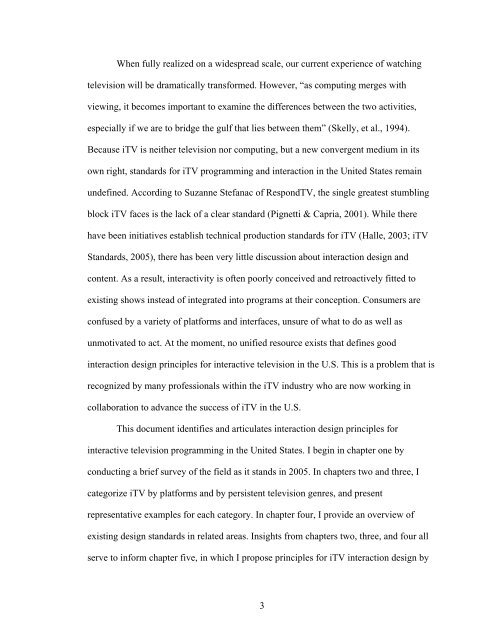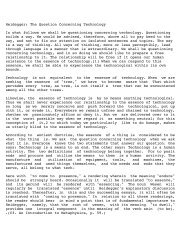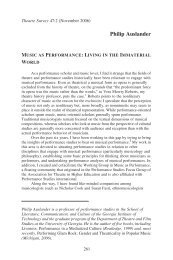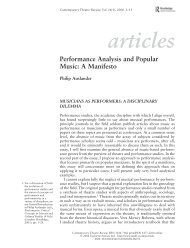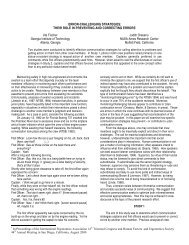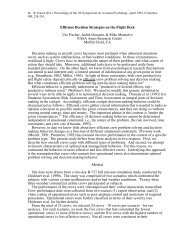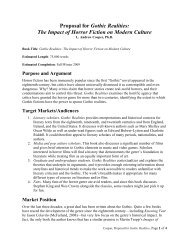INTERACTION DESIGN PRINCIPLES FOR INTERACTIVE ...
INTERACTION DESIGN PRINCIPLES FOR INTERACTIVE ...
INTERACTION DESIGN PRINCIPLES FOR INTERACTIVE ...
Create successful ePaper yourself
Turn your PDF publications into a flip-book with our unique Google optimized e-Paper software.
When fully realized on a widespread scale, our current experience of watching<br />
television will be dramatically transformed. However, “as computing merges with<br />
viewing, it becomes important to examine the differences between the two activities,<br />
especially if we are to bridge the gulf that lies between them” (Skelly, et al., 1994).<br />
Because iTV is neither television nor computing, but a new convergent medium in its<br />
own right, standards for iTV programming and interaction in the United States remain<br />
undefined. According to Suzanne Stefanac of RespondTV, the single greatest stumbling<br />
block iTV faces is the lack of a clear standard (Pignetti & Capria, 2001). While there<br />
have been initiatives establish technical production standards for iTV (Halle, 2003; iTV<br />
Standards, 2005), there has been very little discussion about interaction design and<br />
content. As a result, interactivity is often poorly conceived and retroactively fitted to<br />
existing shows instead of integrated into programs at their conception. Consumers are<br />
confused by a variety of platforms and interfaces, unsure of what to do as well as<br />
unmotivated to act. At the moment, no unified resource exists that defines good<br />
interaction design principles for interactive television in the U.S. This is a problem that is<br />
recognized by many professionals within the iTV industry who are now working in<br />
collaboration to advance the success of iTV in the U.S.<br />
This document identifies and articulates interaction design principles for<br />
interactive television programming in the United States. I begin in chapter one by<br />
conducting a brief survey of the field as it stands in 2005. In chapters two and three, I<br />
categorize iTV by platforms and by persistent television genres, and present<br />
representative examples for each category. In chapter four, I provide an overview of<br />
existing design standards in related areas. Insights from chapters two, three, and four all<br />
serve to inform chapter five, in which I propose principles for iTV interaction design by<br />
3


